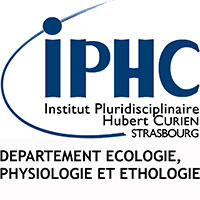Inter-annual variation of physiological traits between urban and forest great tits
Résumé
Urbanization is characterized by rapid environmental changes such as an increase in building surface, in pollution, or a decrease in invertebrate abundance. For many bird species, morphological and physiological differences have been observed between urban and rural individuals that seem to reflect a negative impact of urban life on the health and fitness of individuals. Studies on passerine birds also showed important differences between populations and species in their responses to the urban environment. We propose to test physiological differences between urban and forest individuals over 3 years to understand whether the observed patterns are constant or subject to variations across years. For this purpose, we assessed the health parameters of adults and fledgling of great tits, Parus major, living in an urban and in a forest site in the Eurometropole of Strasbourg, for three years. Bird health was estimated with morphological parameters (body condition and size) and also with physiological parameters (oxidative status and telomere length). Our results showed lower body condition of urban fledglings regardless of the year, but no site effects on telomere length. On the contrary, for adult breeders, urban individuals had longer telomeres than forest ones except for one year which coincide with bad weather conditions during reproduction where no difference was detected. Urban birds also had higher antioxidant capacity whatever the years. These results suggest that cities act as a filter in which only good quality individuals survive and achieve successful reproduction regardless of year, whereas in the forest the selection occurs only during harsh weather years.
Domaines
Ecologie, Environnement| Origine | Fichiers produits par l'(les) auteur(s) |
|---|---|
| licence |




